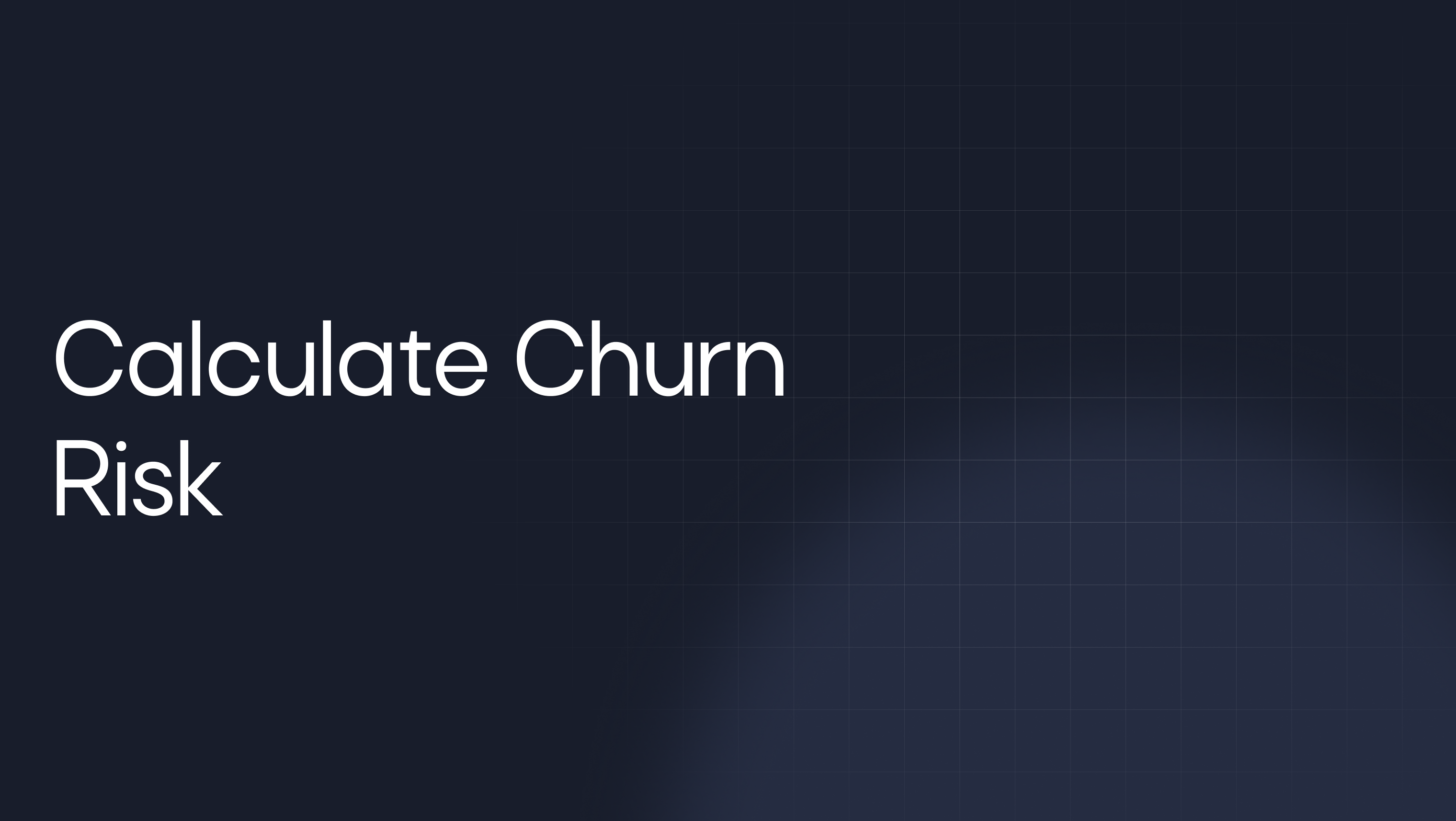Micro-Segmentation Madness: Why 47 User Segments Are Killing Your SaaS Lifecycle Marketing
Most SaaS teams create too many user segments and wonder why their lifecycle campaigns underperform. Here's how to find the segments
Learn how to build a simple churn risk scoring system in 15 minutes using behavioral signals that predict user cancellation 2-4 weeks in advance.

You check your dashboard every Monday morning. Last month's churn rate: 8%. The month before: 6%. But here's the problem—by the time those numbers hit your screen, it's too late. Those users already canceled. The revenue is already gone.
Saas churn reduction isn't about reacting to cancellations. It's about predicting them weeks before they happen and taking action while you still can.
Most SaaS teams track churn as a historical metric—a postmortem of what went wrong. But the companies achieving sub-5% monthly churn rates think differently. They've built simple, predictive systems that flag at-risk users 2-4 weeks before cancellation, when intervention actually works.
The best part? You can build your own churn risk scoring system in 15 minutes using data you already have. No machine learning required. No expensive tools. Just a simple equation that turns user behavior into early warning signals.
Traditional churn tracking is like checking your rearview mirror while driving. It tells you where you've been, not where you're going.
Here's what most SaaS teams track:
All lagging indicators. All too late for meaningful intervention.
Meanwhile, your users are sending churn signals weeks before they cancel:
These behavioral changes predict churn with 70-85% accuracy—if you know how to spot them.
Our comprehensive guide on Predictive Churn Scoring: How to Spot At-Risk Users Before They Ghost dives deeper into advanced churn prediction, but today we're giving you a simple framework you can implement immediately.
This framework uses five behavioral signals that consistently predict churn across SaaS companies. Each signal gets a score from 1-5, and the total score indicates risk level.
You'll need:
The Five Risk Signals:
What to measure: Change in login frequency over the last 30 days vs. previous 30 days
Scoring:
Why it matters: Users who reduce their login frequency are mentally checking out. A 40% drop in logins predicts churn with 78% accuracy in our client data.
Quick calculation: (Logins last 30 days ÷ Logins previous 30 days) - 1 = % change
What to measure: Usage of your product's 2-3 most critical features
Scoring:
Why it matters: Feature abandonment indicates users aren't getting value. When someone stops using the features that initially attracted them, churn follows within 2-6 weeks.
Quick identification: List your top 3 features that correlate with retention. Track weekly usage per user.
What to measure: Type and frequency of support interactions
Scoring:
Why it matters: Support patterns reveal user frustration before it leads to cancellation. Users who shift from "how-to" questions to "this is broken" complaints are high churn risk.
Quick assessment: Review last 30 days of support tickets per user. Look for volume increases and sentiment shifts.
What to measure: Team-based activities (for B2B products)
Scoring:
Why it matters: For B2B SaaS, declining collaboration often signals organizational disengagement or tool switching.
Quick check: Track shares, invites, comments, or other collaborative actions per account.
What to measure: Payment and plan-related behaviors
Scoring:
Why it matters: Billing issues and downgrades are often precursors to full cancellation.
Quick review: Check payment status, recent plan changes, and billing-related support tickets.
The Formula:Churn Risk Score = (Signal 1 × 0.25) + (Signal 2 × 0.30) + (Signal 3 × 0.20) + (Signal 4 × 0.15) + (Signal 5 × 0.10)
Risk Levels:
Example Calculation:User shows:
Churn Risk Score = (4 × 0.25) + (4 × 0.30) + (2 × 0.20) + (3 × 0.15) + (2 × 0.10) = 3.15
Result: High Risk - Weekly intervention needed
Minutes 1-5: Data Collection
Minutes 6-10: Scoring Setup
Minutes 11-15: Risk Identification
Once you have risk scores, action is everything:
Low Risk (1.0-2.0):
Medium Risk (2.1-3.0):
High Risk (3.1-4.0):
Critical Risk (4.1-5.0):
For specific intervention tactics that work at each risk level, our post on Rethinking Retention: Why SaaS Needs Continuous Lifecycle Campaigns provides detailed playbooks.
Once you've validated the manual process, automation becomes straightforward:
Week 2-3: Basic Automation
Month 2: Advanced Integration
Month 3: Optimization
Mistake 1: Over-Weighting Single SignalsDon't base risk assessment on just one metric. A user might have declining logins but increasing feature depth—context matters.
Mistake 2: Ignoring Seasonal PatternsB2B usage often fluctuates with business cycles. Adjust baselines for known seasonal variations.
Mistake 3: Alert FatigueStart with conservative thresholds. Too many alerts lead to ignored alerts.
Mistake 4: No Action PlanRisk scores without intervention strategies are just interesting numbers. Build specific playbooks for each risk level.
SaaS companies implementing simple churn risk scoring typically see:
Retention Improvements: 15-25% reduction in monthly churn within 90 days through early intervention
Revenue Protection: $50K-$500K ARR saved annually by rescuing at-risk accounts before cancellation
Team Efficiency: Customer success teams focus on users with highest save probability rather than reactive firefighting
Forecasting Accuracy: 4-6 week advance warning on churn enables better revenue planning and cash flow management
Once you've mastered the five-signal framework, consider adding:
Churn prediction isn't rocket science—it's pattern recognition. The signals are already in your data. The interventions are already in your playbook. What's missing is the system to connect them.
Fifteen minutes from now, you could have a working churn risk score for your highest-value accounts. By next week, you could have automated alerts flagging users before they cancel. By next month, you could be saving accounts that would have otherwise walked away silently.
The choice is simple: keep tracking churn after it happens, or start predicting it before it does.
Ready to build a comprehensive churn prediction system that goes beyond basic risk scoring? Contact LifecycleX and let's turn your user behavior data into proactive retention campaigns that save accounts, protect revenue, and drive predictable SaaS growth.